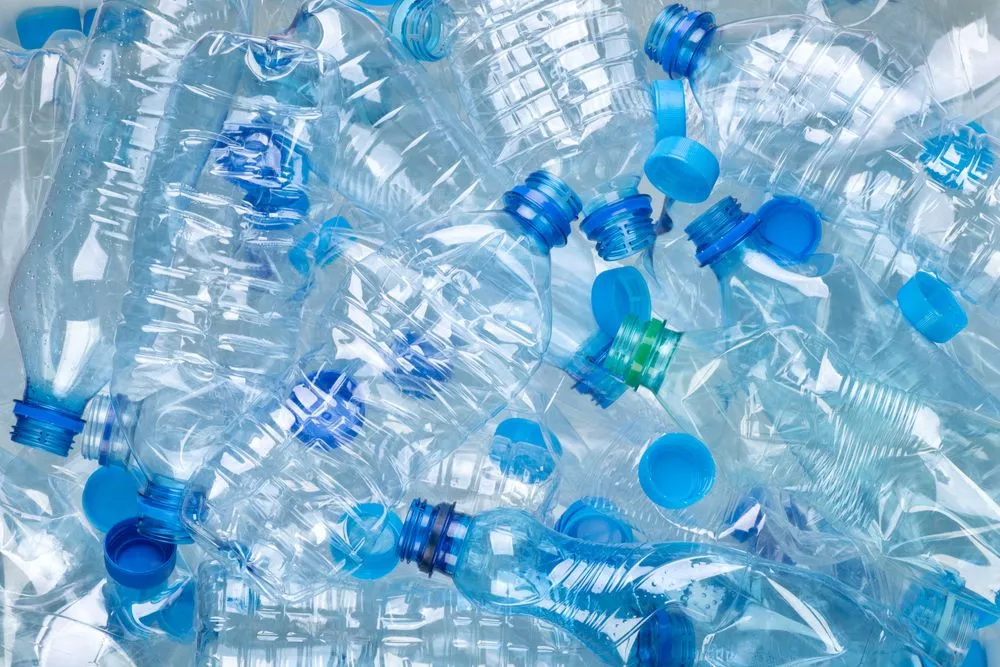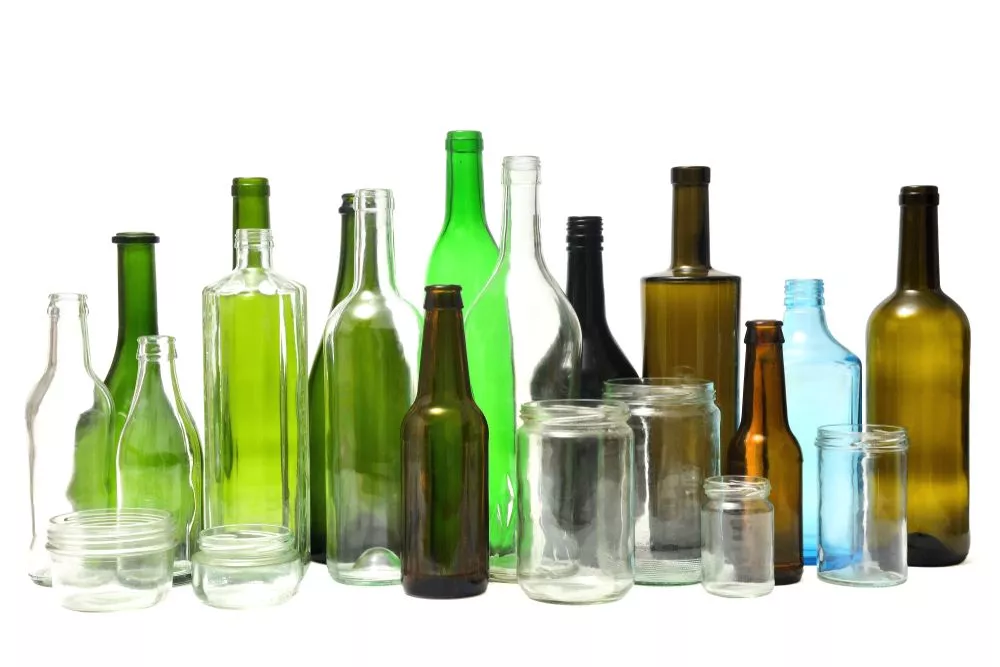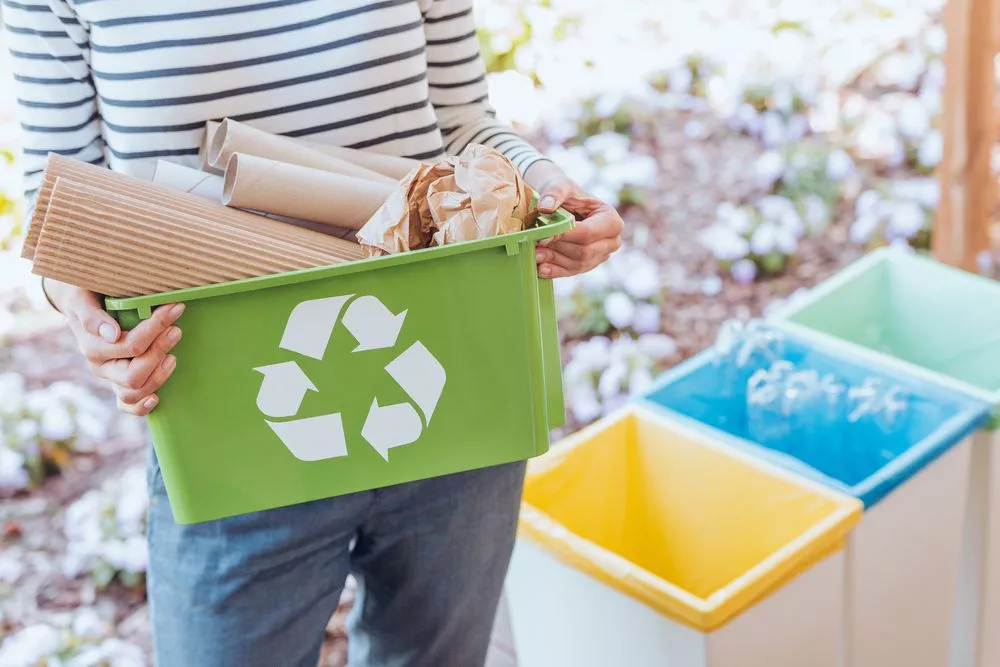6 Types of Recyclable Packaging Materials
Recyclable packaging consists of reusable materials such as glass, metal, paper, and cardboard. Through processing, recycling centers convert them into new types of packaging.
This new packaging is more eco-friendly than 85% of manufactured packaging plastics because they don’t end up in landfills. If your company uses single-use packaging, consider shifting to ones made from recyclable materials.
With the growing number of environmentally conscious consumers, many prefer companies that encourage sustainability and reduce waste. Hence, organizations must keep up with these changes to grow their customer base while helping the environment thrive.
Here are some common recyclable packaging materials for your succeeding products.
6 Types of Recyclable Packaging Materials
1. Polyethylene

Consider polyethylene products if you wonder what packaging is recyclable and sustainable for your business. This plastic packaging includes water bottles, milk cartons, PVC pipes, and food bags. Recycling centers either melt these materials down manually or chemically to form them into new items. It’s important to recycle plastics when possible. Bottles, in particular, take around 450 years to decompose, so it’s more sustainable to reuse them.
2. Paper

Almost any packaging made from paper is recyclable, such as paper bags, corrugated cardboard, and paper tape. It’s also the most recycled material, with 68% of paper products reused in 2021. In addition, companies used around half to create cardboard boxes, which customers reuse as storage.
Paper is also biodegradable and won’t take up landfills if appropriately processed. Therefore, using paper packaging is one of the most sustainable and eco-friendly options for brands.
3. Glass

Glass products contain natural ingredients such as sand, limestone, and soda ash. However, not all types of glass are recyclable. Widespread recyclable glass packages are bottles, jars, and vials. Unrecyclable products include cookware, light bulbs, and mirrors. Due to additional components or processes, these items cause problems if mixed with other types of glass.
The main advantage of glass packaging is that they’re infinitely reusable. Recycling companies melt and reform glass into different types of packaging in perpetuity. It’ll never lose its quality.
4. Aluminum

Aluminum is a flexible material commonly made into foil and cans. While its primary use is for food preservation, companies that make aircraft, refrigerators, and electrical conductors also utilize aluminum. While it’s not biodegradable like plastic, aluminum is one of the most recyclable materials, with 75% of manufactured products still circulated today.
Like glass, recycling centers break aluminum down perpetually without compromising quality. However, the thicker the material needed for packaging, the heavier it is, which may increase production costs.
5. Polystyrene foam

Several types of packaging use polystyrene foam or Styrofoam, such as cups, coolers, take-out containers, and packing peanuts. Its other use is as building insulation. However, because of its polymer type, it takes up to 500 years to degrade.
Are packing peanuts recyclable as well as other polystyrene products? They are, but the process is complex and more expensive than producing the material. However, there are biodegradable packing peanuts on the market and peanuts made from recycled materials.
Food companies can’t use recycled polystyrene as packaging, but the material has several other uses. Some recycling centers do accept Styrofoam products for processing. Centers break down Styrofoam to create coat hangers, tiles, furniture, and concrete blocks.
6. Wood

Wood is a natural material and, like paper, is one of the most recyclable materials in the world. Many companies use wooden crates and pallets to transport large items because of the material’s strength and durability. Crates last for three to five years, but many still find the timber useful after its retirement as a shipping container.
In 2018, the world recycled around 3.1 million tons of wood pallets. Hobbyists and furniture companies use recovered wood to create different kinds of furniture. Other uses for wood include mulch and pulp for composting and paper production.
Advantages of Recyclable Packaging Materials
Recycling packaging materials supply several advantages, such as:
- Consumers are more likely to purchase from companies with eco-friendly initiatives. A report by Winsight Grocery Business found that 54% of customers say a package’s sustainability is essential in their decision-making process.
- Recyclable packaging is more versatile than other materials. Materials such as paper and wood are compostable, which is good for the environment. Recycling centers form them into various kinds of items for multiple industries.
- Recyclable materials reduce the resources needed to package an item or create the packaging. For instance, pieces of recycled glass melt at a lower temperature than their raw materials, saving energy costs.
Every Bit of Change Helps the Earth

Many consumers are becoming more environmentally conscious, influencing the types of products they purchase. Using recyclable materials increases a brand’s standing among customers and reduces the energy needed to create new packaging. There are various kinds of materials to consider using, each versatile enough to have other uses beyond just packaging.
Meyers has what your brand needs for a sustainable switch and bringing your packaging solutions to life. Speak to an expert today at Meyers for professional printing results.

